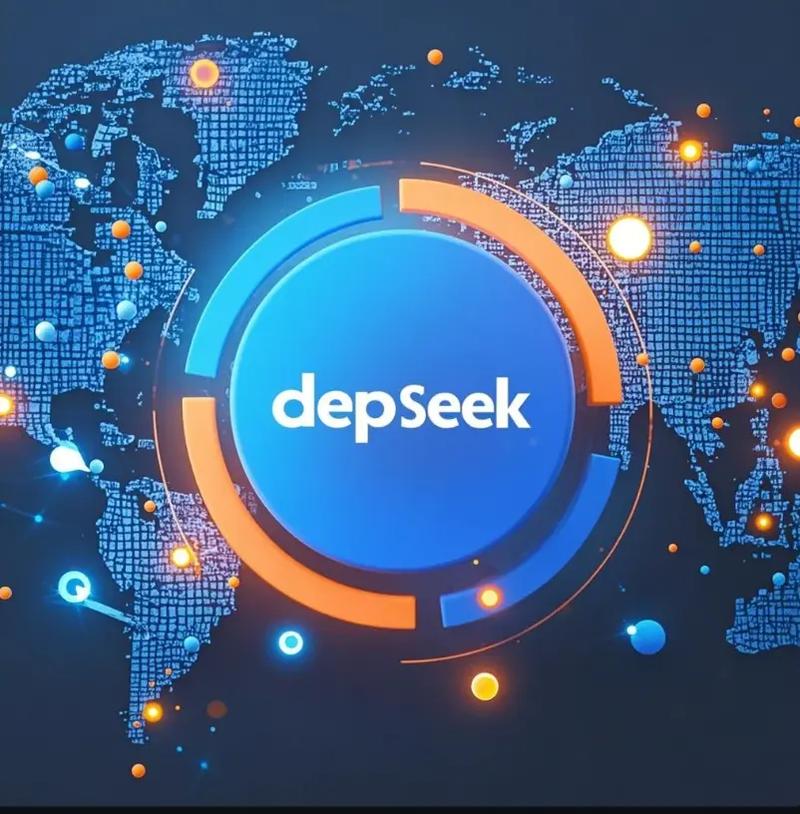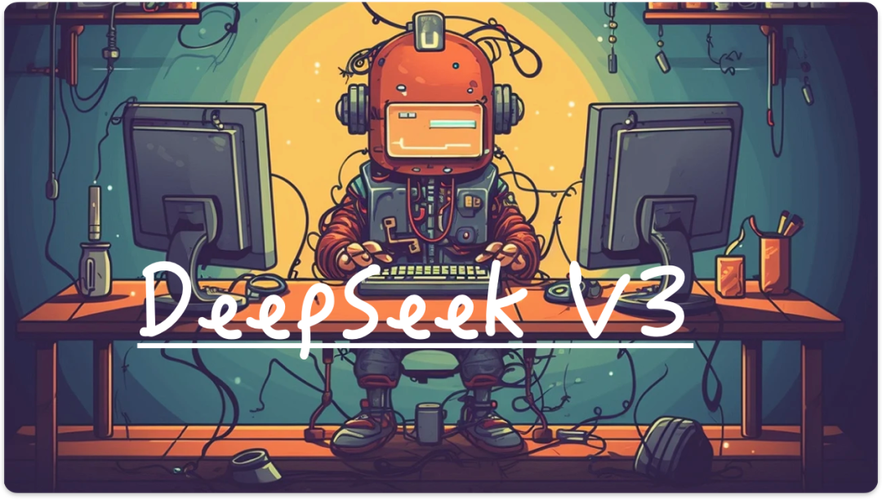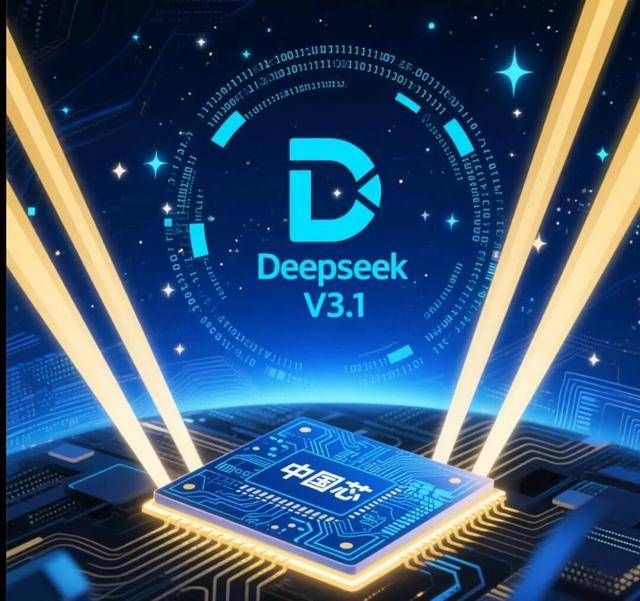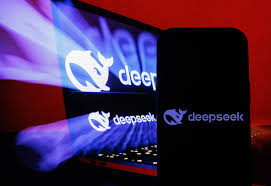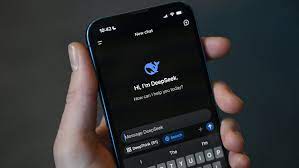⚡ Ollama + React Frontend Template: Build a Modern AI Chatbot with DeepSeek Models
In the evolving AI developer ecosystem of 2025, tools like Ollama and React have emerged as game-changers for local and lightweight AI applications. Whether you're looking to build a fully offline chatbot, prototype an agent interface, or create a production-grade frontend for DeepSeek, this guide will show you how to connect a React UI to an Ollama-powered backend running DeepSeek R1, Coder, or any GGUF-based LLM.
As of 2022, Fire-Flyer 2 had 5000 PCIe A100 GPUs in 625 nodes, each containing 8 GPUs.[28] It later incorporated NVLinks and NCCL to train larger models that required model parallelism.[29][30]
✅ Table of Contents
Introduction to Ollama and React
Why Use DeepSeek + Ollama + React
Project Architecture Overview
Installing and Running Ollama Locally
Installing DeepSeek Models in Ollama
Creating the React Frontend (Vite + Tailwind)
Connecting React to the Ollama API
Sending Prompts and Handling Streaming Responses
Adding Features: Chat History, Avatars, UI Themes
Deploying Your App
Performance Tips and Troubleshooting
Final Thoughts + GitHub Template Offer
1. 🎯 Introduction to Ollama and React
What is Ollama?
Ollama is a local LLM runner and model manager that:
Supports open GGUF models (like DeepSeek R1 or DeepSeek-Coder)
Offers a built-in HTTP REST API
Runs on macOS, Linux, and Windows (WSL)
Simplifies loading, serving, and switching between LLMs
Why React?
React is ideal for frontend UIs:
Declarative UI with state handling
Clean component structure
Easily connects to APIs
Highly customizable (supports Tailwind, animations, etc.)
2. 🧠 Why Use DeepSeek + Ollama + React
| Feature | Benefit |
|---|---|
| DeepSeek R1 | Free, open-weight LLM with 128K context |
| Ollama | Easy local serving of LLMs with REST API |
| React | Beautiful, fast frontends with flexible logic |
| Local Setup | Fully offline, no token fees, great for demos and privacy-sensitive apps |
3. 🏗️ Project Architecture Overview
bash 📁 project-root/ ├── /frontend ← React app (Vite + Tailwind) ├── /backend ← Ollama running locally └── README.md
The frontend will send requests to:
bash复制编辑http://localhost:11434/api/generate
4. ⚙️ Installing and Running Ollama Locally
Step 1: Install Ollama
From official site: https://ollama.com
Or via CLI:
bash curl -fsSL https://ollama.com/install.sh | sh
Step 2: Start Ollama
bash ollama run deepseek-coder
If the model isn’t installed, it will automatically be downloaded.
5. 📥 Installing DeepSeek Models
Popular options:
bash ollama pull deepseek-coder ollama pull deepseek-chat
Other models: mistral, llama2, gemma, etc.
You can list installed models:
bash ollama list
6. 🌐 Creating the React Frontend (Vite + Tailwind)
Step 1: Setup Vite React Project
bash npm create vite@latest ai-chatbot -- --template reactcd ai-chatbot npm install
Step 2: Install Tailwind CSS
bash npm install -D tailwindcss postcss autoprefixer npx tailwindcss init -p
Update tailwind.config.js:
js
content: ["./index.html", "./src/**/*.{js,ts,jsx,tsx}"]
Update src/index.css:
css @tailwind base;@tailwind components;@tailwind utilities;
7. 🔌 Connecting React to the Ollama API
Create ChatBox.jsx
jsx
import React, { useState } from 'react';export default
function ChatBox() { const [input, setInput] = useState('');
const [chat, setChat] = useState([]);
const sendPrompt = async () => {
const res = await fetch('http://localhost:11434/api/generate',
{ method: 'POST',
headers: { 'Content-Type': 'application/json' },
body: JSON.stringify({ model: 'deepseek-coder', prompt: input, stream: false
})
});
const data = await res.json();
const message = data.response;
setChat([...chat, { user: input, bot: message }]);
setInput('');
}; return (
<div className="max-w-xl mx-auto p-4">
<h1 className="text-xl font-bold mb-4">DeepSeek Chatbot</h1>
<div className="bg-white shadow-md p-4 rounded-md space-y-2 h-96 overflow-y-auto">
{chat.map((entry, index) => (
<div key={index}>
<p><strong>You:</strong> {entry.user}</p>
<p><strong>AI:</strong> {entry.bot}</p> </div>
))} </div>
<div className="flex gap-2 mt-4"> <input
value={input}
onChange={(e) => setInput(e.target.value)}
className="flex-1 border p-2 rounded"
placeholder="Ask something..."
/>
<button onClick={sendPrompt}
className="bg-blue-500 text-white px-4 py-2 rounded">
Send </button> </div> </div>
);
}
Add to App.jsx:
jsx
import ChatBox from './ChatBox';function App() {
return ( <div className="bg-gray-100 min-h-screen">
<ChatBox /> </div>
);
}export default App;
8. 🔁 Sending Prompts and Handling Streaming Responses
Ollama supports streaming, so you can enhance the chatbot by displaying tokens one-by-one.
Here’s how to adapt streaming in React:
jsx
const streamPrompt = async () =>
{ const res = await fetch('http://localhost:11434/api/generate',
{ method: 'POST', body: JSON.stringify(
{ model: 'deepseek-coder', prompt: input, stream: true
})
}); const reader = res.body.getReader();
const decoder = new TextDecoder();
let message = '';
while (true) { const { done, value } = await reader.read();
if (done) break; const chunk = decoder.decode(value);
const parsed = JSON.parse(chunk.trim().split('\n')[0]);
message += parsed.response;
setLiveResponse(message);
}
};
9. 🎨 Adding Features: Chat History, Avatars, UI Themes
a. Chat Avatars
jsx <p className="text-blue-700">🤖 AI:</p><p className="text-green-700">👤 You:</p>
b. UI Themes
Install Tailwind UI or daisyUI for dark mode support.
bash npm install daisyui
Update tailwind.config.js:
js
plugins: [require("daisyui")],
Enable dark mode in layout:
html <body className="dark:bg-gray-900">
10. 🚀 Deploying Your App
Local deployment:
bash npm run build serve -s dist
Remote deployment:
Render.com: React + Ollama Docker combo
Fly.io: Deploy Ollama + frontend globally
Tauri/Electron: Wrap in desktop app
Local Web App: Run Ollama in background, React on localhost
11. 🧠 Performance Tips and Troubleshooting
| Problem | Solution |
|---|---|
| Ollama slow to respond | Use quantized models (Q4_0, Q5_1) |
| CORS errors | Use proxy or enable CORS headers |
| Port conflict | Change Ollama port (OLLAMA_PORT=11435) |
| Model load failure | Use ollama list to check and pull again |
| Slow frontend | Debounce input, reduce render updates |
12. ✅ Final Thoughts + GitHub Template
This combo — Ollama + DeepSeek + React — is one of the most powerful setups in 2025 for:
⚡ Building local AI chatbots
💬 Creating chat interfaces for customers or internal use
💻 Prototyping LLM products with zero cloud cost
🔐 Deploying private assistants for secure environments
📦 Want a GitHub Template?
Let me know and I’ll send:
✅
frontend/with ChatBox UI✅
README.mdwith setup instructions✅ Docker setup for Ollama + Vite
✅ Bonus: PDF branding guide for a commercial version
Would you like this exported to GitHub, Notion, or a downloadable ZIP archive?

